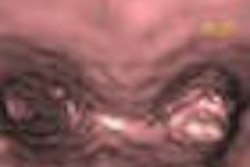A computer pen can outperform a conventional mouse for performing 3D image segmentation, according to research from Massachusetts General Hospital (MGH) in Boston.
"Innovative computer pen-based image postprocessing can act as an efficient alternative in terms of faster and easier segmentation when compared to the conventional mouse which is presently employed on most 3D user interfaces," said Dr. Pragya Dang.
She presented the research during a scientific session at the 2008 RSNA meeting in Chicago.
Determining the volumes of solid abdominal organs and focal lesions is important in certain clinical situations such as monitoring therapy response, the progression of neoplastic diseases, preoperative assessment of liver donors, or spleen volume estimations, Dang said. Currently, volumetric assessment is performed on cross-sectional images and requires manual or automatic segmentation of the organ of interest.
Automatic segmentation methods for volume estimations are available, but there is limited data evaluating their accuracy and reproducibility, she said. And manual or semiautomated segmentation of cross-sectional images with the computer mouse is time-consuming.
The MGH research team wanted to assess if an electromagnetic resonance-based computer pen could be used for radiology image segmentation for 3D reconstructions and volume-area estimations.
Fifty consecutive abdominal imaging studies -- 25 MDCT and 25 MR -- were retrospectively evaluated for liver and spleen volume estimation by image segmentation. The exams were transferred from a PACS diagnostic workstation to a 3D postprocessing application on a personal computer. Two radiologists then independently performed segmentation using the conventional mouse and computer pen on a special LCD (Wacom Technology, Vancouver, WA).
In 25 cases, the radiologist first performed segmentation using the mouse. The order was reversed for the other 25 cases.
The researchers recorded the time taken for performing each method on each study. Readers were also asked to compare ease of tracing and the ergonomic benefits of each technique on a five-point scale (1 = unacceptable, 3 = acceptable, and 5 = excellent). Segmentation accuracy was also compared on a five-point scale (1 = segmentation with computer pen was much worse than with mouse, 3 = segmentation with computer pen was same as with mouse, and 5 = segmentation with computer pen much was better than with mouse).
The computer pen was significantly faster than the mouse for both liver and spleen segmentation, Dang said. For the liver, reader 1 had an average time for analysis of 236 ± 14.5 seconds with the computer pen and 301 ± 15.7 seconds with the mouse. Reader 2 had an average analysis time of 153 ± 71 seconds with the computer pen and 221 ± 73 seconds with the mouse (p = 0.02).
For spleen volumetry, reader 1 had an average analysis time of 127.3 ± 5.7 seconds with the computer pen and 155.6 ± 6.5 seconds with the mouse. Reader 2 had an average analysis time of 74.1 ± 3.1 seconds with the computer pen and 113.9 ± 4.5 seconds with the mouse (p = 0.01).
Both readers also found that the computer pen was easier to use and more ergonomic, with reader 1 providing a score of 4 for the computer pen and 2.5 for the mouse. Reader 2 gave a score of 4 for the pen and 3 for the mouse. Both readers also had similar segmentation accuracy to the mouse, yielding an average score of 3.
"There was no significant difference in the tracing accuracy of liver and spleen segmentations," she said. "However, in some cases segmentation performed with the pen tended to follow the contours more smoothly compared to the mouse."
Formal ergonomic analyses should be performed, however, before the computer pen can be used in clinical applications, she said.
By Erik L. Ridley
AuntMinnie.com staff writer
February 20, 2009
Related Reading
Hybrid 3D echo/SPECT technique produces better CAD imaging, February 12, 2009
Virtual colonoscopy beginners do better with 3D data, February 5, 2009
3D image guidance improves spinal surgery outcomes, December 29, 2008
Nodule measurement streamlined with space-scale analysis, November 25, 2008
3D Doppler evaluation helps identify malignant breast lesions, November 6, 2008
Copyright © 2009 AuntMinnie.com




















